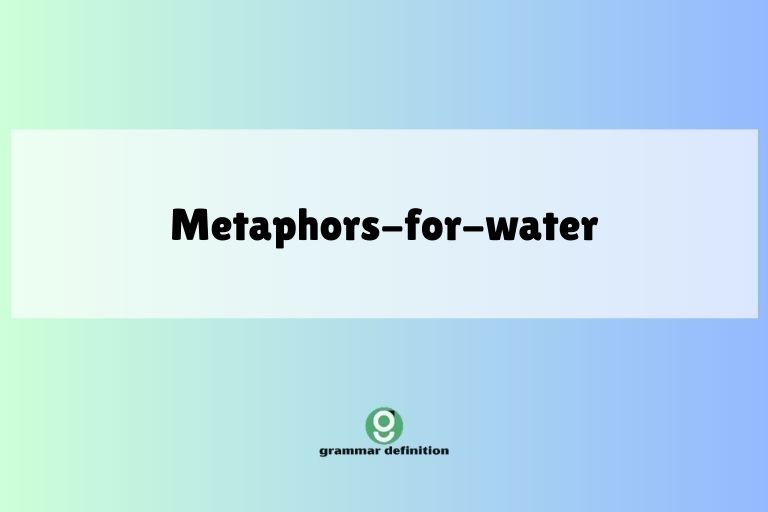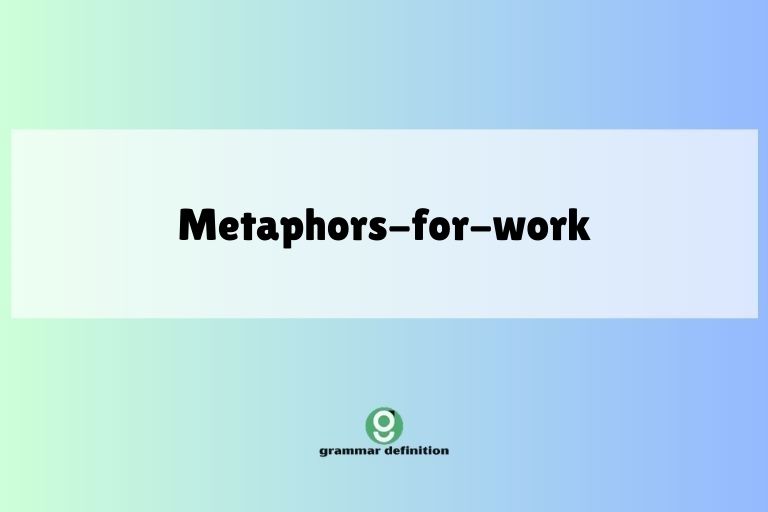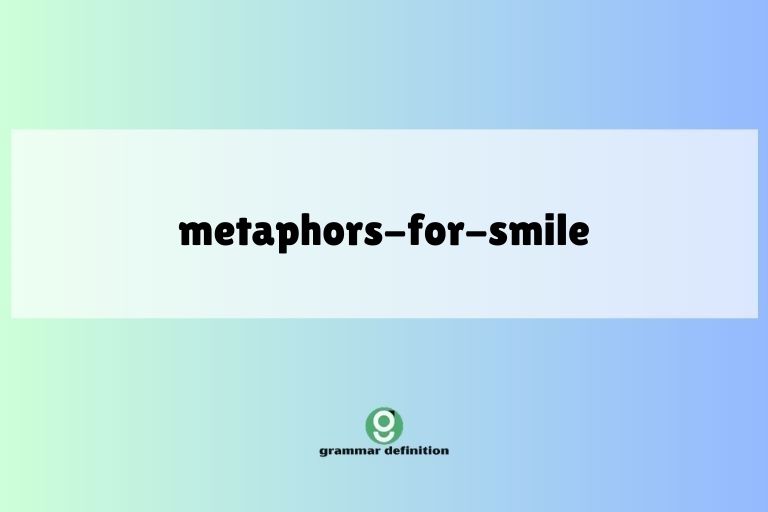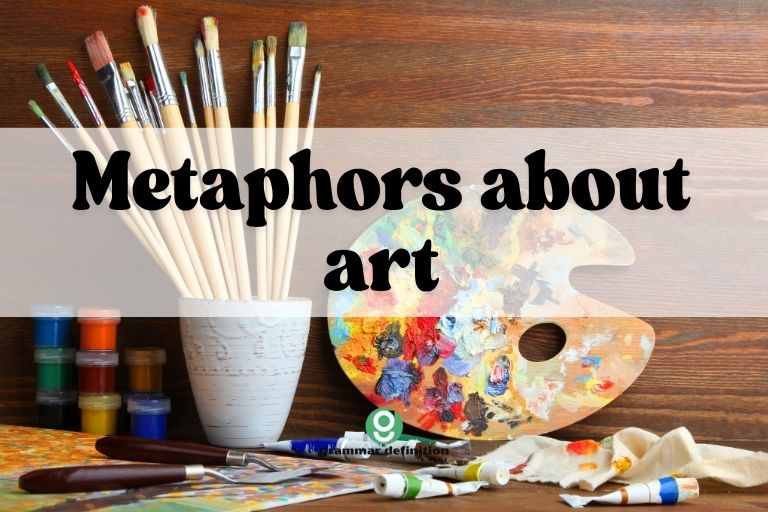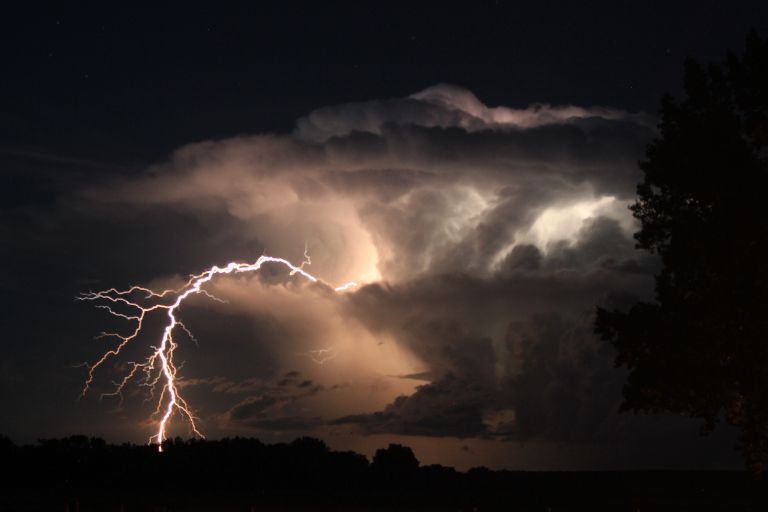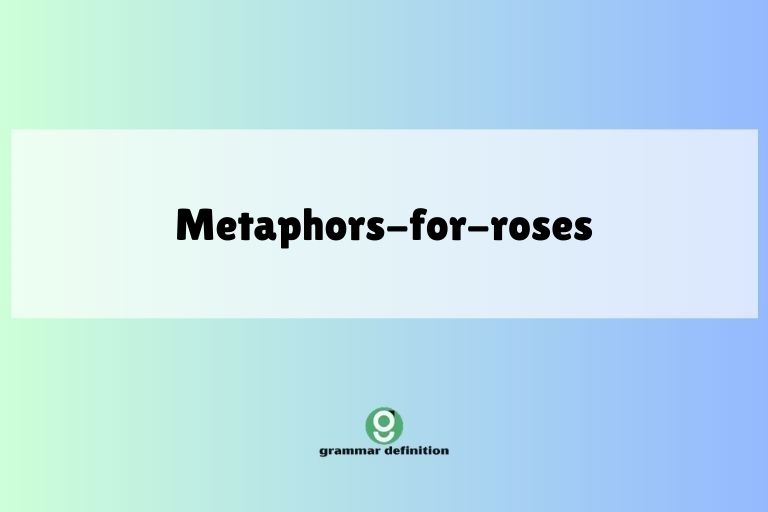Spring’s Whisper: Mastering Metaphors for the Season of Renewal
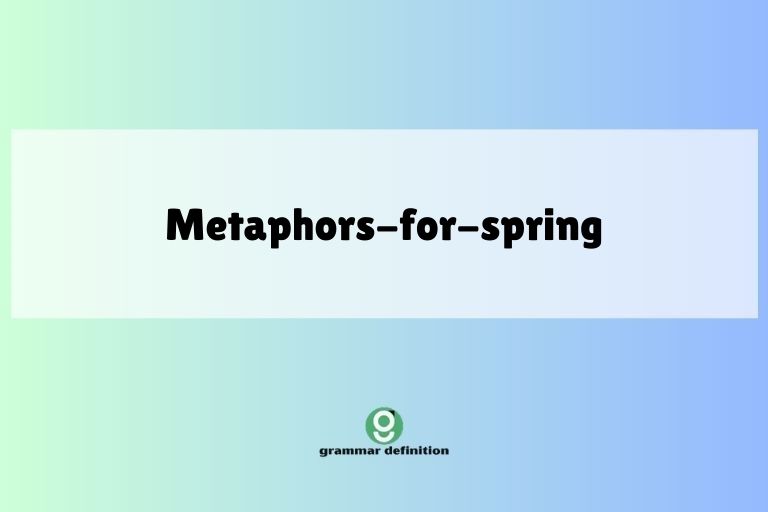
Understanding metaphors is crucial for mastering English, as they enrich language and enhance comprehension. Metaphors allow us to connect seemingly unrelated concepts, creating vivid imagery and deeper meaning.
This article focuses on metaphors related to spring, a season rich with symbolic potential. By exploring these metaphors, learners will improve their grasp of figurative language, expand their vocabulary, and develop a more nuanced understanding of English.
This guide is perfect for English language learners, students studying literature, and anyone who wants to enhance their communication skills to a new level.
Table of Contents
- Introduction
- Definition of Metaphor
- Structural Breakdown of Metaphors
- Types of Spring Metaphors
- Examples of Spring Metaphors
- Usage Rules for Spring Metaphors
- Common Mistakes with Metaphors
- Practice Exercises
- Advanced Topics in Metaphorical Language
- Frequently Asked Questions
- Conclusion
Definition of Metaphor
A metaphor is a figure of speech that directly compares two unlike things without using “like” or “as.” Unlike similes, which make explicit comparisons, metaphors imply a resemblance, suggesting that one thing is another. This substitution creates a deeper understanding and a more vivid image in the reader’s mind. Metaphors are essential for creative writing, persuasive arguments, and everyday communication, allowing us to express abstract ideas in concrete terms.
Metaphors function by transferring qualities from one thing (the source) to another (the target). For example, if we say “Spring is a green explosion,” we are transferring the qualities of an explosion (suddenness, energy, impact) to the season of spring.
The context often clarifies the intended meaning. Metaphors classify concepts by associating them with new attributes, offering a fresh perspective.
They appear in literature, poetry, everyday speech, and even scientific discourse.
Structural Breakdown of Metaphors
Understanding the structure of a metaphor involves recognizing its key components: the tenor (the subject being described), the vehicle (the object or concept used to describe the tenor), and the ground (the shared characteristics between the tenor and the vehicle). Identifying these elements helps to dissect and interpret the meaning of any metaphor.
Let’s break down the metaphor “Spring is a symphony of birdsong.” Here, the tenor is “spring,” the vehicle is “symphony of birdsong,” and the ground is the harmonious and beautiful nature of both spring and a symphony. Understanding this structure allows for precise interpretation and application of metaphors.
The effectiveness of a metaphor depends on how well the ground connects the tenor and vehicle.
Types of Spring Metaphors
Spring, with its themes of rebirth, growth, and renewal, lends itself to several common metaphorical interpretations. These categories help organize and understand the diverse ways spring is used metaphorically.
Spring as Rebirth
This is perhaps the most common metaphor for spring. It represents a new beginning, a fresh start after the dormancy of winter.
It symbolizes hope, renewal, and the cycle of life.
Spring as Youth
Spring is often linked to youth due to its association with growth, energy, and potential. It represents the early stages of life, full of promise and vigor.
Spring as Awakening
This metaphor emphasizes the idea of coming out of a period of inactivity or dormancy. It signifies a renewed awareness, a fresh perspective, and a return to life.
Spring as Promise
Spring embodies the promise of a fruitful future. The blossoming flowers and budding trees suggest a time of abundance and potential rewards.
Spring as Healing
After the harshness of winter, spring brings warmth and growth, symbolizing healing and recovery. It represents the restoration of vitality and the overcoming of adversity.
Examples of Spring Metaphors
The following examples illustrate the various types of spring metaphors discussed above. Each table provides specific instances, helping to solidify understanding.
Rebirth Examples
The table below showcases examples of metaphors that represent spring as a time of rebirth and renewal. Notice how each sentence employs figurative language to connect spring with new beginnings and the cyclical nature of life.
| Metaphor | Explanation |
|---|---|
| Spring is the earth’s resurrection. | Compares spring to the rising from the dead, emphasizing renewal. |
| The garden was a phoenix, rising from the ashes of winter. | Illustrates the transformative power of spring, like the mythical bird. |
| Spring is a second chance for the world. | Highlights the opportunity for growth and improvement that spring offers. |
| The melting snow was a chrysalis, releasing the butterfly of spring. | Compares the transition from winter to spring to the transformation of a butterfly. |
| Spring is the world shedding its old skin. | Suggests a complete transformation and renewal, like a snake shedding its skin. |
| The blooming flowers are the world’s joyful tears of rebirth. | Connects the act of blooming with emotional release and renewal. |
| Spring is the annual rebirth of hope. | Positions spring as a recurring symbol of optimism and new beginnings. |
| The green shoots emerging from the soil are nature’s defiant act of resurrection. | Emphasizes the strength and persistence of life’s renewal in spring. |
| Spring is the earth being born again. | Simple yet powerful comparison to birth, highlighting new beginnings. |
| The return of the birds is the world’s choir singing a song of rebirth. | Associates the return of birds with a celebratory expression of renewal. |
| Spring is the planet’s annual restart. | Frames spring as a reset button for the entire world, symbolizing new opportunities. |
| The sprouting seeds are tiny miracles of rebirth. | Highlights the wonder and transformative power of new growth in spring. |
| Spring is the land waking up from a long sleep, reborn and refreshed. | Compares spring to a refreshed awakening, emphasizing revitalization. |
| The new leaves are nature’s fresh start. | Connects the emergence of new leaves with the concept of a clean slate. |
| Spring is the earth reinventing itself. | Suggests a complete transformation and renewal, repositioning itself for growth. |
| The blooming flowers are the world’s joyful tears of rebirth. | Connects the act of blooming with emotional release and renewal. |
| Spring is the annual rebirth of hope. | Positions spring as a recurring symbol of optimism and new beginnings. |
| The green shoots emerging from the soil are nature’s defiant act of resurrection. | Emphasizes the strength and persistence of life’s renewal in spring. |
| Spring is the earth being born again. | Simple yet powerful comparison to birth, highlighting new beginnings. |
| The return of the birds is the world’s choir singing a song of rebirth. | Associates the return of birds with a celebratory expression of renewal. |
| Spring is the planet’s annual restart. | Frames spring as a reset button for the entire world, symbolizing new opportunities. |
| The sprouting seeds are tiny miracles of rebirth. | Highlights the wonder and transformative power of new growth in spring. |
| Spring is the land waking up from a long sleep, reborn and refreshed. | Compares spring to a refreshed awakening, emphasizing revitalization. |
| The new leaves are nature’s fresh start. | Connects the emergence of new leaves with the concept of a clean slate. |
| Spring is the earth reinventing itself. | Suggests a complete transformation and renewal, repositioning itself for growth. |
Youth Examples
The following table provides examples of metaphors that link spring to the concept of youth, emphasizing energy, growth, and potential.
| Metaphor | Explanation |
|---|---|
| Spring is the childhood of the year. | Compares spring to the early, innocent stages of life. |
| The new leaves are the baby teeth of the trees. | Relates the fresh leaves to the initial growth of youth. |
| Spring is a playful puppy, full of energy and mischief. | Associates spring with the lively and spirited nature of a young animal. |
| The blooming flowers are the giggles of the earth’s children. | Connects the joy of blooming with the carefree laughter of youth. |
| Spring is the world’s first steps. | Highlights the initial stages of growth and development. |
| The season is a green adolescent, awkward but full of potential. | Compares the growing season to the transitional phase of adolescence. |
| Spring is the youthful blush on nature’s cheek. | Associates spring with the fresh and vibrant look of youth. |
| The sprouting seeds are the newborn hopes of the earth. | Connects the emergence of new seeds with the promise of youthful potential. |
| Spring is the world’s exuberant teenager, bursting with life. | Highlights the energetic and lively nature of spring. |
| The new buds are the earth’s first whispers of youth. | Associates the emergence of new buds with the early stages of growth. |
| Spring is a newborn babe swaddled in green. | Compares spring to a newborn, emphasizing new life and potential. |
| The early blossoms are the earth’s first smiles. | Connects the blooming of early flowers with the joy of youth. |
| Spring is the world’s playground, full of laughter and games. | Associates spring with the carefree and joyful activities of youth. |
| The gentle rain is the earth’s mother, nurturing its young spring. | Compares rain to a nurturing mother, supporting the growth of spring. |
| Spring is the planet’s youthful renaissance. | Frames spring as a period of artistic and intellectual rebirth, akin to the Renaissance. |
| The chirping birds are the earth’s children singing with glee. | Connects the joyful sounds of birds with the carefree spirit of youth. |
| Spring is the world’s energetic toddler, exploring with curiosity. | Relates the season to the exploratory and curious nature of a toddler. |
| The early sunlight is the earth’s gentle caress upon its youthful face. | Associates the sun’s warmth with a tender touch, nurturing new life. |
| Spring is the earth’s debutante, adorned in vibrant green. | Compares spring to a young woman making her formal entrance, emphasizing beauty and vibrancy. |
| The tender shoots are the earth’s first steps towards maturity. | Connects the initial growth of plants with the beginning of a journey towards adulthood. |
| Spring is the world’s fresh canvas, ready for new creations. | Associates spring with the potential for artistic expression and new beginnings. |
| The budding flowers are the earth’s shy smiles, revealing youthful beauty. | Connects the blossoming of flowers with the gentle and endearing nature of youth. |
| Spring is the world’s eager student, absorbing knowledge and growing. | Relates the season to the eagerness to learn and develop, characteristic of youth. |
| The gentle breezes are the earth’s playful whispers, sharing secrets of youth. | Associates the soft winds of spring with intimate and joyful communication. |
| Spring is the earth’s vibrant dance, full of energy and life. | Compares spring to a lively dance, emphasizing the vitality and exuberance of youth. |
Awakening Examples
This table provides examples of metaphors that represent spring as a period of awakening and renewed awareness, symbolizing a return to life after dormancy
| Metaphor | Explanation |
|---|---|
| Spring is the world waking from a long slumber. | Compares spring to the act of waking up, emphasizing renewed activity. |
| The thawing ground is the earth stretching after a long nap. | Relates the melting of the ground to the act of stretching, signifying awakening. |
| Spring is the planet rubbing the sleep from its eyes. | Associates spring with the initial stages of waking up and becoming alert. |
| The emerging flowers are the earth’s first yawns. | Connects the appearance of flowers with the act of yawning, signifying the end of sleep. |
| Spring is the world shaking off its winter coat. | Highlights the act of shedding the old and embracing the new. |
| The rising sap is the blood rushing back into the earth’s veins. | Compares the flow of sap to the return of vitality and energy. |
| Spring is the land remembering how to sing. | Associates spring with the rediscovery of joy and expression. |
| The returning birds are the earth’s alarm clock. | Connects the return of birds with the signal to wake up and start the day. |
| Spring is the world opening its eyes to a new day. | Highlights the start of a fresh and vibrant period. |
| The budding trees are the earth’s dreams taking shape. | Associates the growth of trees with the realization of potential. |
| Spring is the earth’s gentle nudge, stirring life from its winter sleep. | Compares spring to a gentle encouragement to awaken. |
| The first green shoots are the earth’s tentative steps out of darkness. | Connects the initial growth of plants with a cautious return to activity. |
| Spring is the world’s silent meditation, preparing for vibrant action. | Associates spring with a peaceful contemplation before renewed energy. |
| The melting ice is the earth shedding its frozen memories. | Compares the melting of ice to releasing past burdens and embracing the present. |
| Spring is the planet’s quiet awakening, filled with potential. | Highlights the peaceful and expectant nature of spring’s awakening. |
| The lengthening days are the earth’s slow stretch towards consciousness. | Connects the increasing daylight hours with a gradual return to awareness. |
| Spring is the world’s gentle stirring, like a dreamer waking slowly. | Compares spring to a gradual and comfortable awakening. |
| The unfolding leaves are the earth’s thoughts unfurling. | Connects the growth of leaves with the development of new ideas and perspectives. |
| Spring is the planet’s soft murmur, a prelude to its vibrant song. | Associates spring with a quiet introduction to a more energetic expression. |
| The warming sun is the earth’s gentle caress, coaxing life awake. | Highlights the sun’s role in encouraging life to emerge from dormancy. |
| Spring is the earth’s slow unfurling, revealing its hidden beauty. | Compares spring to a gradual unveiling of the world’s hidden potential. |
| The returning warmth is the earth’s memory returning, remembering life. | Connects the increasing temperature with a revival of past experiences and vitality. |
| Spring is the world’s quiet promise, whispered after a long silence. | Associates spring with a soft and subtle hint of future abundance. |
| The gentle rains are the earth’s tears of joy, awakening the land. | Highlights the refreshing and life-giving nature of spring rainfall. |
| Spring is the earth’s gentle yawn, stretching into a new day. | Compares spring to a comfortable and relaxed awakening. |
Promise Examples
The table below lists metaphors that portray spring as a season of promise. The examples connect the season with hope, potential, and the anticipation of future abundance.
| Metaphor | Explanation |
|---|---|
| Spring is a blank canvas, promising a masterpiece. | Compares spring to a canvas, emphasizing the potential for creation. |
| The blooming flowers are the earth’s whispered promises. | Relates the blooming of flowers to subtle hints of future abundance. |
| Spring is a treasure chest, full of unopened gifts. | Associates spring with a container of potential and unrevealed rewards. |
| The sprouting seeds are the earth’s hopes taking root. | Connects the growth of seeds with the establishment of future prosperity. |
| Spring is a delicate contract, signed between winter and summer. | Highlights the transitional nature of spring, bridging two distinct seasons. |
| The warming sun is a golden key, unlocking the earth’s potential. | Compares the sun to a key, emphasizing its role in enabling growth. |
| Spring is a whispered secret, promising untold riches. | Associates spring with a subtle hint of future abundance. |
| The gentle rain is the earth’s investment, guaranteeing a bountiful harvest. | Connects rainfall with a necessary input for future prosperity. |
| Spring is a green invitation, luring us into a world of possibilities. | Highlights the attractive and enticing nature of spring. |
| The lengthening days are the earth’s slow reveal, promising warmth and light. | Associates the increasing daylight hours with the gradual approach of summer. |
| Spring is the earth’s hopeful whisper, anticipating a joyful summer. | Compares spring to a quiet anticipation of future happiness. |
| The budding trees are the earth’s dreams taking shape, promising growth. | Connects the growth of trees with the realization of potential. |
| Spring is a delicate promise, etched in every green leaf and budding flower. | Highlights the subtle but pervasive signs of future abundance. |
| The returning birds are the earth’s messengers, announcing a season of plenty. | Connects the return of birds with the herald of future prosperity. |
| Spring is the earth’s gentle nudge, urging life towards its fullest potential. | Compares spring to a subtle encouragement for growth. |
| The first blossoms are the earth’s shy smiles, hinting at the beauty to come. | Connects the blooming of early flowers with a subtle hint of future beauty. |
| Spring is the earth’s soft promise, whispered on the breeze. | Associates spring with a gentle indication of future abundance. |
| The tender shoots are the earth’s first steps towards a bountiful harvest. | Connects the initial growth of plants with the beginning of a journey towards prosperity. |
| Spring is the world’s hopeful gaze, fixed on a bright future. | Compares spring to a focused anticipation of future success. |
| The warming earth is the planet’s gentle embrace, nurturing the promise of life. | Highlights the nurturing role of the earth in supporting future growth. |
| Spring is the earth’s subtle nod, acknowledging the potential of new beginnings. | Associates spring with a quiet affirmation of future opportunities. |
| The first green shoots are the earth’s tentative assurances, whispering of resilience. | Connects the initial growth of plants with a subtle guarantee of future endurance. |
| Spring is the world’s quiet expectation, anticipating the warmth of summer’s embrace. | Compares spring to a peaceful anticipation of future comfort. |
| The gentle rains are the earth’s soft caress, nurturing the promise of growth. | Highlights the nurturing role of rain in supporting future development. |
| Spring is the earth’s delicate promise, etched in every budding branch and blooming petal. | Connects the subtle signs of growth with a pervasive indication of future abundance. |
Healing Examples
The table below gives examples of metaphors that portray spring as a time of healing and recovery, symbolizing the restoration of vitality after a period of hardship.
| Metaphor | Explanation |
|---|---|
| Spring is the earth’s bandage, covering the wounds of winter. | Compares spring to a bandage, emphasizing its restorative properties. |
| The thawing ground is the earth’s fever breaking. | Relates the melting of the ground to the end of an illness, signifying recovery. |
| Spring is the world recovering from a long illness. | Associates spring with the process of regaining health after a period of sickness. |
| The emerging flowers are the earth’s first smiles after a long sorrow. | Connects the appearance of flowers with the expression of joy after a period of sadness. |
| Spring is the earth’s therapy, mending what winter broke. | Highlights the restorative and rehabilitative nature of spring. |
| The warming sun is the earth’s gentle doctor, healing the scars of frost. | Compares the sun to a doctor, emphasizing its role in promoting recovery. |
| Spring is the world’s gentle balm, soothing the aches of winter. | Associates spring with a soothing agent that relieves pain and discomfort. |
| The gentle rain is the earth’s tears of cleansing, washing away the pain. | Connects rainfall with the act of purification and emotional release. |
| Spring is the earth’s quiet recovery, regaining its strength. | Highlights the gradual and peaceful process of regaining vitality. |
| The budding trees are the earth’s renewed spirit, growing stronger each day. | Associates the growth of trees with the revitalization of inner strength. |
| Spring is the earth’s soft whisper, promising healing after the storm. | Compares spring to a gentle assurance of recovery after adversity. |
| The first green shoots are the earth’s tentative steps towards recovery. | Connects the initial growth of plants with a cautious return to health. |
| Spring is the world’s gentle embrace, comforting the weary land. | Associates spring with a comforting gesture that provides solace. |
| The melting ice is the earth shedding its frozen tears, releasing the pain. | Compares the melting of ice to the release of emotional suffering. |
| Spring is the earth’s quiet resilience, proving its ability to endure. | Highlights the strength and persistence of the earth’s capacity to recover. |
| The lengthening days are the earth’s slow steps towards brighter days. | Connects the increasing daylight hours with a gradual return to happiness. |
| Spring is the earth’s gentle hand, mending the wounds of winter. | Compares spring to a tender gesture that promotes healing. |
| The tender shoots are the earth’s first breaths of fresh air, revitalizing the land. | Connects the initial growth of plants with a refreshing and invigorating experience. |
| Spring is the world’s quiet strength, emerging from the cold. | Associates spring with a subtle but powerful ability to overcome adversity. |
| The warming soil is the earth’s gentle embrace, nurturing new life and healing old wounds. | Highlights the nurturing role of the earth in supporting recovery and growth. |
| Spring is the earth’s whispered promise, assuring us that even the deepest wounds can heal. | Compares spring to a gentle reassurance that recovery is possible. |
| The first blossoms are the earth’s shy smiles, a testament to its healing power. | Connects the blooming of early flowers with a subtle expression of restored vitality. |
| Spring is the world’s gentle whisper, a reminder that after every winter, there is a thaw. | Associates spring with a comforting message of hope and renewal. |
| The gentle rains are the earth’s soft tears, washing away the remnants of winter’s pain. | Highlights the cleansing and restorative nature of spring rainfall. |
| Spring is the earth’s quiet triumph, a testament to its enduring strength and resilience. | Compares spring to a subtle but significant victory over adversity. |
Usage Rules for Spring Metaphors
When using spring metaphors, consider the following rules to ensure clarity and effectiveness:
- Context is Key: Ensure the metaphor fits the context of your writing or speech.
- Clarity: The connection between the tenor and vehicle should be clear to the audience.
- Originality: Strive for fresh and creative metaphors to avoid clichés.
- Consistency: Maintain consistency in your metaphorical language throughout a piece.
- Audience Awareness: Consider your audience’s understanding and cultural background.
For example, using a highly technical metaphor with a general audience might lead to confusion. Similarly, a metaphor that resonates in one culture might not have the same impact in another.
Always tailor your metaphors to your specific audience and purpose.
Common Mistakes with Metaphors
One common mistake is using mixed metaphors, where the tenor is compared to two unrelated vehicles, creating confusion. Another is using clichés, which are overused metaphors that have lost their impact.
Overly complex or obscure metaphors can also hinder understanding. It’s crucial to ensure that the metaphor is clear, relevant, and effective.
| Incorrect | Correct | Explanation |
|---|---|---|
| Spring is a breath of fresh air that kicks the bucket. | Spring is a breath of fresh air, revitalizing the world. | Avoid mixing unrelated metaphors (fresh air and kicking the bucket). |
| Spring is a time of new beginnings (cliché). | Spring is the earth’s reawakening, a symphony of colors and sounds. | Replace clichés with more original and vivid expressions. |
| Spring is a quantum entanglement of chlorophyll and zeitgeists. | Spring is a vibrant tapestry woven with sunshine and rain. | Ensure the metaphor is accessible and understandable to the audience. |
Practice Exercises
Test your understanding of spring metaphors with the following exercises.
Exercise 1: Identify the Metaphor
Identify the metaphor in each sentence.
| Question | Answer |
|---|---|
| 1. Spring is the earth’s gentle rebirth. | rebirth |
| 2. The new leaves are the baby teeth of the trees. | baby teeth |
| 3. Spring is a playful puppy, full of energy. | playful puppy |
| 4. The thawing ground is the earth stretching. | earth stretching |
| 5. Spring is a treasure chest of unopened gifts. | treasure chest |
| 6. The warming sun is a golden key. | golden key |
| 7. Spring is the earth’s bandage. | earth’s bandage |
| 8. The sprouting seeds are the earth’s hopes. | earth’s hopes |
| 9. Spring is a delicate contract. | delicate contract |
| 10. The gentle rain is the earth’s investment. | earth’s investment |
Exercise 2: Complete the Metaphor
Complete the following sentences with an appropriate spring metaphor.
| Question | Answer |
|---|---|
| 1. Spring is like __________, bringing new life to the world. | a painter |
| 2. The blooming flowers are __________, filling the air with joy. | nature’s smiles |
| 3. Spring is __________, shaking off the cold of winter. | a sleepy giant |
| 4. The gentle rain is __________, nurturing the earth. | a mother’s touch |
| 5. Spring is __________, promising a bountiful harvest. | a golden promise |
| 6. The new leaves are __________, reaching for the sky. | green fingers |
| 7. Spring is __________, awakening the world from its slumber. | a gentle alarm |
| 8. The warmer sun is __________, melting the winter snow. | a golden blanket |
| 9. Spring is __________, bringing a sense of hope and renewal. | a fresh start |
| 10. The returning birds are __________, announcing the arrival of spring. | nature’s messengers |
Exercise 3: Create Your Own Metaphor
Create your own original metaphor for spring, focusing on one of the themes discussed in this article (rebirth, youth, awakening, promise, healing).
| Question | Answer |
|---|---|
| 1. Write an original metaphor for spring emphasizing rebirth. | Spring is the earth’s second act, a chance to rewrite its story. |
| 2. Write an original metaphor for spring emphasizing youth. | Spring is the world’s playground, echoing with laughter and endless possibilities. |
| 3. Write an original metaphor for spring emphasizing awakening. | Spring is the earth’s yawn, stretching into a new day of vibrant life. |
| 4. Write an original metaphor for spring emphasizing promise. | Spring is a seed of hope planted in the heart of the earth, promising a future harvest. |
| 5. Write an original metaphor for spring emphasizing healing. | Spring is the earth’s gentle embrace, soothing the wounds of winter with warmth and light. |
Advanced Topics in Metaphorical Language
For those looking to deepen their understanding of metaphorical language, consider exploring these advanced topics:
- Extended Metaphors: Metaphors that are sustained over several lines or paragraphs, creating a more complex and nuanced comparison.
- Mixed Metaphors: The combination of two or more incompatible metaphors in a single expression, often creating a humorous or nonsensical effect (though usually unintentional).
- Dead Metaphors: Metaphors that have become so common that they are no longer recognized as figurative language (e.g., “the heart of the matter”).
- Conceptual Metaphors: Underlying metaphorical systems that shape our understanding of abstract concepts (e.g., “argument is war”).
- Cognitive Linguistics: The study of how metaphors influence our thought processes and perception of the world.
Studying these advanced topics can provide a more profound appreciation of the power and complexity of metaphorical language.
Frequently Asked Questions
What is the difference between a metaphor and a simile?
A metaphor directly compares two unlike things without using “like” or “as,” while a simile uses “like” or “as” to make an explicit comparison. For example, “Spring is a rebirth” (metaphor) versus “Spring is like a rebirth” (simile).
How can I avoid using clichés in my metaphors?
Strive for originality by thinking creatively and exploring fresh perspectives. Consider the specific qualities you want to convey and brainstorm unique comparisons that capture those qualities.
What makes a metaphor effective?
An effective metaphor is clear, relevant, and creates a vivid image or deeper understanding in the reader’s mind. It should resonate with the audience and enhance the overall impact of the writing.
Can a metaphor be too complex?
Yes, a metaphor can be too complex if it is difficult for the audience to understand or if the connection between the tenor and vehicle is too obscure. It’s important to strike a balance between creativity and clarity.
How do cultural differences affect the interpretation of metaphors?
Cultural differences can significantly impact the interpretation of metaphors, as certain symbols and associations may have different meanings in different cultures. It’s important to be aware of these differences when using metaphors in cross-cultural communication.
Conclusion
Metaphors are a powerful tool for enriching language and enhancing understanding. By mastering the art of using spring metaphors, English language learners can improve their communication skills, expand their vocabulary, and develop a deeper appreciation for the beauty and complexity of the English language.
Continue practicing and exploring different types of metaphors to unlock your full creative potential and communicate with greater clarity and impact. Remember that the key to effective metaphor usage lies in clarity, originality, and audience awareness.
Embrace the power of figurative language and let your words bloom like the flowers of spring.

